You need a new rain jacket, one that will keep you relatively dry but not cost a fortune. You want to know how to prepare for basic injuries on the trail, and how to deal with them when they occur. And those clouds gathering overhead: what do they mean — and should I be concerned?
So many questions hikers face.
Fortunately, there are lots of places where you can find answers.
In our four decades of hiking we’ve come to rely on certain sources for answers. Below, we list the ones we’ve found to be most helpful. Hopefully you’ll find them helpful as well.
GearLab
![]() GearLab, until recently known as Outdoor GearLab, gets its own entry because it’s so darn helpful. Whenever we’re contemplating a new piece of advice, we first see what GearLab has to say. For each category of gear it reviews, GearLab tests dozens of products, then rates them in a variety of categories: Best Value, Best Men’s, Best Women’s, Best Overall — the same categories you use to make your decisions.
GearLab, until recently known as Outdoor GearLab, gets its own entry because it’s so darn helpful. Whenever we’re contemplating a new piece of advice, we first see what GearLab has to say. For each category of gear it reviews, GearLab tests dozens of products, then rates them in a variety of categories: Best Value, Best Men’s, Best Women’s, Best Overall — the same categories you use to make your decisions.
Fall hiking gear
Our cool(ish) weather-inspired pining for fall got us thinking about fall hiking gear. Not that we need anything — which is the ideal time to look because you’re not pressured into snap decisions. Rather, you can take a few minutes to make intelligent decisions, shop around a little. And the best place to do a little high-quality window shopping? Gearlab. For instance, its “The Best Hiking Pants for 2024” includes a range of options. Gearlab present 13 pants options, ranging from the $32.50 Columbia Silver Ridge Convertible (“Thin material not suitable for rugged terrain, no water resistance”), to the $200 Arc’teryx Gamma Pant (“These functional, high quality pants best serve those who hike in wet weather”). Or the “Best Base Layers for 2024,” which rates 19 options, some of which are surprisingly affordable. Take a moment to pick out your fall wardrobe here.
Best beanies
Because we know many outdoorsy types like to thoroughly research before buying, we point you toward GearLab’s reviews of the 5 Best Beanies for Men and Women. From a large field — 50 for women alone — they whittled down to less than 10 the number of beanies to field test for both men and women before coming up with their top 5, with rankings based on varying criteria. Note: some are viewed as not particularly good for athletic purposes, such as hiking. Check out the men’s Top 5 here, the women’s here.
Best solar charger
While we’re on the topic of portable chargers, why not check out solar chargers? Because of our tree cover in the Southeast, these tend to be not quite as effective — and thus, popular — as they are in the wide-open West, but they’re becoming more efficient, and if you can master when and how to best use them, they can keep you in power for days. GearLab recently completed its latest review (they’ve been reviewing them for 10 years); for this review they started with more than 100 chargers and winnowed them down to the 8 that underwent extensive field testing. Go here to find out how they ranked, including their top charger and their best buys.
10 Best Sandals of 2024
In today’s feature post we extol the virtues of summer hikes with lots of water. So it only makes sense that in this space we extol the virtues of the best resource we know for selecting gear: GearLab. GearLab reviewed 65 pairs of sandals to come up with their 10 Best Sandals of 2024. Not all the sandals are suitable for long hikes, which GearLab recognizes. Thus, they evaluate the sandals based on a variety of criteria — including Best Secure Adventure Sandal. Their recommendation? You’ll have to go here to find out. 06.05.24
Best Sun Protection Shirts of 2024
Here’s a question that frequently comes up on hikes, especially long hikes, especially in summer: How exposed is the trail? Hikers, I’ve noticed, are becoming increasingly concerned with sun protection, to the point they’ll consider a long-sleeve shirt on a 90-degree day if it offers good sun protection. So how do you know which of the multitudes of sun protection shirts offer both good sun protection and breathability (so it doesn’t feel like you’re wearing a long-sleeve shirt on a sunny summer’s day? You seek out GearLab’s “Best Sun Protection Shirts of 2024.” Over the past four years GearLab has tested 25 such shirts and rates 16 of them here.
10 Best Rain jackets
In this world of overnight delivery, you might still have time to order a rain jacket before Debbie departs completely. And not just any rain jacket, but the best, at least according to Outdoor Gear Reviews’ May review of the 10 Best Rain Jackets of 2024. And as they often do, the jackets are based by different criteria: Best Overall, Best Performance, Best Bang for your Buck, best men’s, best women’s. Over the past 14 years, GearLab has tested 205 jackets, and these are currently the 10 best. Check ‘em out here.
Gear (in general)
Pack Hacker on packing cubes
 Intrigued by the notion of packing cubes for backpacking and hiking and want to learn more? Check out “Best Backpacking Cubes for Travel,” from Pack Hacker. They review a variety of options, rating them based on different purposes and needs. You might be surprised how many options there are. Check it out here.
Intrigued by the notion of packing cubes for backpacking and hiking and want to learn more? Check out “Best Backpacking Cubes for Travel,” from Pack Hacker. They review a variety of options, rating them based on different purposes and needs. You might be surprised how many options there are. Check it out here.
Audubon’s ‘bins’ picks
“Bins” — birder slang for binoculars — are coveted for a variety of features. Weight, for starters. There’s also ease of focusing, clarity, ergonomics, color rendition, and balance, to name a few. Audubon’s “top-scoring binoculars for less than $150” takes all of these into account in their reviews of the five binoculars under $150 they tested (a couple of which list at just above $200, but are included anyway “because they are often on sale for less than $200.” And if you have no problem going well north of $200, you can check out reviews of bins in other price categories in the complete Audubon Guide to Binoculars. Find the budget binocular review here.
Motivation
Hiking goals
Looking for a worthy hiking goal in 2024? The Carolina Mountain Club has 7, from the longstanding South Beyond 6000 (40 select southeastern peaks above 6,000 feet), to the Pisgah 400 (hiking all 400 miles of trail in the Pisgah Ranger District), to Lookout Tower Challenge (hike 24 fire towers). Find those goals and more at the CMC website, here. Those goals are North Carolina centric. In Virginia, check out Go Hike Virginia’s “15 Hardest Hikes in Virginia,” which includes some favorites of our GetHiking! Charlottesville crew. Check ‘em out here.
Ethics, getting involved
Leave No Trace
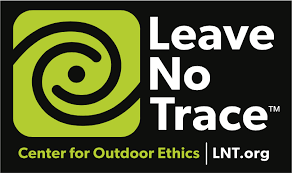 Most of us know the basic seven principles of Leave No Trace: 1. Plan Ahead and Prepare, 2. Travel & Camp on Durable Surfaces, 3. Dispose of Waste Properly, 4. Leave What You Find, 5. Minimize Campfire Impacts, 6. Respect Wildlife, 7. Be Considerate of Other Visitors. But do you know what these seven principles entail? Be a better outdoorsy type in the year ahead by becoming more well-versed in the specifics of Leave No Trace by spending quality time at the Center for Outdoor Ethics’s Leave No Trace website.
Most of us know the basic seven principles of Leave No Trace: 1. Plan Ahead and Prepare, 2. Travel & Camp on Durable Surfaces, 3. Dispose of Waste Properly, 4. Leave What You Find, 5. Minimize Campfire Impacts, 6. Respect Wildlife, 7. Be Considerate of Other Visitors. But do you know what these seven principles entail? Be a better outdoorsy type in the year ahead by becoming more well-versed in the specifics of Leave No Trace by spending quality time at the Center for Outdoor Ethics’s Leave No Trace website.
Hiking etiquette
Don’t you wish there was a Miss Manners, of sorts, for questions of hiking etiquette? Well, there is, of sorts.
 The American Hiking Society offers a quick rundown of key do’s and don’ts when hiking. For instance, did you know that hikers headed downhill should yield to hikers headed up hill? They should. Or that when you take a break, you should do so off the trail? (Would you just park in the middle of the road to stretch driving cross country? No, you would not.)
The American Hiking Society offers a quick rundown of key do’s and don’ts when hiking. For instance, did you know that hikers headed downhill should yield to hikers headed up hill? They should. Or that when you take a break, you should do so off the trail? (Would you just park in the middle of the road to stretch driving cross country? No, you would not.)
Spend a couple of minutes pursuing the AHS’s rules for hiker etiquette. It will make the trail an even more civil place to be.
Volunteering
Feel like getting involved in trail matters, you’re just not sure how? Check out this list of 200 U.S. hiking organizations affiliated with the American Hiking Society. It includes causes you may be familiar with (Appalachian Trail Conservancy, Appalachian Mountain Club, Carolina Thread Trail) and ones you may not (Chinook Trail Association). Lots of regional options, in addition to the ones above. Find an organization and how learn you can get involved starting here.
When nature calls
A question that frequently comes up: Are there restrooms on this hike?
Answer: Sure. Pick a tree.
I will note that this question rarely comes from males. I should note, too, that my answer rarely elicits the hearty chuckle I expect.
For a more helpful answer on the topic, I defer to Backpacker magazine, which has far more experience on the topic. Read Backpacker’s answer here.
Finding a hike
‘Best Hikes with Dogs: North Carolina’
So, how do you know if a trail is good for a dog? You get a copy of  Karen Chavez’s “Best Hikes with Dogs: North Carolina.” Chavez, who was the Outdoors Editor at the Asheville Citizen-Times at the time she wrote the book, did a lot of hiking across the state to cull these pup-friendly hikes. She also includes information on trail etiquette for dog owners and their pets, tips on hiking with dogs and their special needs, dealing with wildlife encounters and more. Learn more and score a copy here.
Karen Chavez’s “Best Hikes with Dogs: North Carolina.” Chavez, who was the Outdoors Editor at the Asheville Citizen-Times at the time she wrote the book, did a lot of hiking across the state to cull these pup-friendly hikes. She also includes information on trail etiquette for dog owners and their pets, tips on hiking with dogs and their special needs, dealing with wildlife encounters and more. Learn more and score a copy here.
State Park hikes
Looking for a hike with a little something extra this weekend? Check out the hikes offered at your local State Park. For instance, Saturday morning at 9 you can tag along with a ranger at Virginia’s Fairy Stone State Park for a two-hour hike to Little Mountain Falls. Or, in North Carolina, at Gorges State Park take a hike ranger-led hike to Raymond Fisher Pond. Check out additional options by clicking the links below:
National Forest Service websites
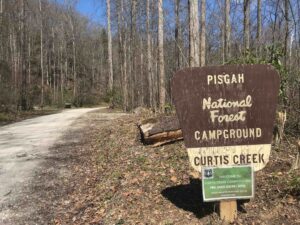 The start of spring is when many of us start to return to our National Forests to explore. In part that’s because a lot of us don’t get out as much in winter. In part, it’s because many of us have a drive a ways to reach a National Forest, and in winter we’re more included to hike closer to home. But a big reason we steer clear is because many of the roads we take to reach our favorite spots — and some of the places themselves — are closed for winter. Now, they’re starting to reopen. When? Well, you can find out speedy quick by going to the appropriate Forest Service website for your state and checking “Alerts & Notices.”
The start of spring is when many of us start to return to our National Forests to explore. In part that’s because a lot of us don’t get out as much in winter. In part, it’s because many of us have a drive a ways to reach a National Forest, and in winter we’re more included to hike closer to home. But a big reason we steer clear is because many of the roads we take to reach our favorite spots — and some of the places themselves — are closed for winter. Now, they’re starting to reopen. When? Well, you can find out speedy quick by going to the appropriate Forest Service website for your state and checking “Alerts & Notices.”
Where to check ahead
In our quest this week to get you to check ahead before heading out, we rerun this list of contact links for some of the larger land managers in the region:
- Blue Ridge Parkway
- N.C. Department of Transportation
- Great Smoky Mountains National Park
- North Carolina State Parks
- North Carolina National Forests (Croatan, Pisgah, Nantahala, Uwharrie)
- Virginia Department of Transportation
- Shenandoah National Park
- Virginia National Forests (George Washington and Jefferson)
- Virginia State Parks
American Hiking Society’s Hikes Near You
 Looking for a fresh source of recommended hikes? Check out the American Hiking Society’s Hikes Near You database. You start with a map showing trails on a map. Pan back for a big overview, which gives you a general sense of the length of the trails. Then, drill down for specifics. Click on a trail for the quick skinny, then click again for specifics — you’ll be taken to REI’s crowd-sourced Hiking Project. Check it out here.
Looking for a fresh source of recommended hikes? Check out the American Hiking Society’s Hikes Near You database. You start with a map showing trails on a map. Pan back for a big overview, which gives you a general sense of the length of the trails. Then, drill down for specifics. Click on a trail for the quick skinny, then click again for specifics — you’ll be taken to REI’s crowd-sourced Hiking Project. Check it out here.
Resources on resources
Resource American Trails Resource Library
Curious about how ebikes will impact multi-use trails? Maybe you have questions about how to become a better advocate for trails in your area? Or perhaps you’re interested in keeping up on current legislation involving trails? All questions that could require time-consuming sleuthing on the internet. Or that could be answered quickly with a visit to the American Trails website. American Trails is a nonprofit that “celebrates decades of working on behalf of all trail interests. Our website is one of the world’s most comprehensive online sources for planning, building, designing, funding, managing, enhancing, and supporting trails, greenways, and blueways.” It’s especially alluring if you’re a little geeky, but a solid resource even if you aren’t. Check it out here.
Andrew Skurka’s blog
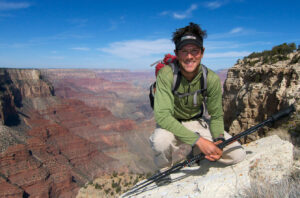 When it comes to advice based on hands-on, in-the-field experience, it’s hard to beat Andrew Skurka, who has hiked more than 30,000 miles including a bevy of long, long hikes, such as the 6,875-mile Great Western Loop and the 7,775-mile Sea-to-Sea Route. (If you haven’t heard of some of these, it’s because he makes them up — meaning he pioneers them.) Skurka thought he wanted to be a Wall Street type when he enrolled at Duke in the late 1990s, quickly saw the error of his ways and has become one of the world’s preeminent distance hikers. Today, he continues to hike, but also teaches and shares his experience and offers advice on his blog, which you can find here.
When it comes to advice based on hands-on, in-the-field experience, it’s hard to beat Andrew Skurka, who has hiked more than 30,000 miles including a bevy of long, long hikes, such as the 6,875-mile Great Western Loop and the 7,775-mile Sea-to-Sea Route. (If you haven’t heard of some of these, it’s because he makes them up — meaning he pioneers them.) Skurka thought he wanted to be a Wall Street type when he enrolled at Duke in the late 1990s, quickly saw the error of his ways and has become one of the world’s preeminent distance hikers. Today, he continues to hike, but also teaches and shares his experience and offers advice on his blog, which you can find here.
YouTube + Google
 Imagine having a friend with a photo album from trips to, seemingly, all the places you’d like to hike in the region. In fact, you do have such a friend — it’s your very own GetHiking! Meetup hiking group. Each week on our hikes, people take pictures and post them on their local site. Some post one or two, some post a whole lot. Not only do they showcase the various trails we hike, but they show how much fun we have on our hikes. Here are the appropriate links to two of our more active groups: Charlottesville and Charlotte. Check ‘em out. 04.04.2024
Imagine having a friend with a photo album from trips to, seemingly, all the places you’d like to hike in the region. In fact, you do have such a friend — it’s your very own GetHiking! Meetup hiking group. Each week on our hikes, people take pictures and post them on their local site. Some post one or two, some post a whole lot. Not only do they showcase the various trails we hike, but they show how much fun we have on our hikes. Here are the appropriate links to two of our more active groups: Charlottesville and Charlotte. Check ‘em out. 04.04.2024
Safety & First Aid
American Hiking Society on safety and first aid
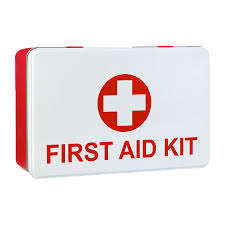 The best way to avoid needing a rescue? The best two ways, actually?
The best way to avoid needing a rescue? The best two ways, actually?
- Be prepared before going into the wild.
- Know what to do should a problem arise,
You’ll find quick information on both topics in the American Hiking Society’s Hiking 101 Resource page under the heading “Safety & First Aid.” Everything from preventing and dealing with blisters, to hydration to basic first aid is covered. Check it out here.
Mayo Clinic
The more you know, right? That applies to pretty much everything, and this weekend that’s especially true when it comes to knowing the effects of heat on your body. Our go-to medical source, the Mayo Clinic, is well-versed on the topic; learn most of what you need to know by starting here. And if you don’t have time to become an expert on the subject, check out this Mayo Minute on heat exhaustion and heat stroke.
Nature
Look, up in the night sky!
Again, on a Tuesday Night Hike a while back, we were blessed by clear skies that were cold and crisp. We hit a clearing, flipped off our headlamps, looked up and — What is it we’re looking at? We were looking at all kinds of celestial bodies, yet we weren’t sure what we were looking at. That’s why before heading out on the next night hike I’ll be sure to check out space.com‘s Stargazing page for its day-by-day (night-by-night?) breakdown of what’s in the sky. Had I looked before Tuesday night’s hike, I would have learned, for instance, that Jupiter and Venus would be traveling together above the southeastern horizon. Find out what’s going on in the sky before your next night hike, here.
Picture those clouds
 You read about clouds and their various meanings in science class and thought, “Wow those cloud descriptions were great, but I’m a visual learner so how will I identify each type of cloud when I see it in the sky?” Well you’re in luck, because this Instructables page has everything you need to know and more about how to keep up with the clouds! Not to mention it has plenty of helpful pictures!
You read about clouds and their various meanings in science class and thought, “Wow those cloud descriptions were great, but I’m a visual learner so how will I identify each type of cloud when I see it in the sky?” Well you’re in luck, because this Instructables page has everything you need to know and more about how to keep up with the clouds! Not to mention it has plenty of helpful pictures!
USGS streamflow data
You’re doing a hike that has multiple stream crossings, and there’s been a fair amount of rain of late. How do you know if the stream is too high to cross? The U.S. Geological Survey monitors streamflow on thousands of waterways nationwide, with data livestreamed to its website. Making sense of the data can take a bit of work. For starters, not every river is monitored, so you may need to rely on a nearby waterway to get an idea. And what exactly the data means isn’t intuitive. For each reporting station, both the river’s height (Gage Height) and flow (Discharge, measured in cubic feet per second) are shown. You’ll need to click on the reporting station’s Station Number for historical information to put those numbers into perspective. You can find data here for North Carolina, here for Virginia.
Six simple weather checks
As we mentioned earlier, we are now into the summer hiking season. In addition to dealing with bugs (see “Tip”) we must also be more vigilant about the weather, especially those summer thunderstorms that can pop up out of nowhere. The folks at The Simple Hiker offer up six resources for checking the weather before a hike (and during, to some degree). Reduce your chances of getting caught unawares by Mother Nature by checking out The Simple Hiker’s “Six Different Ways to Check the Weather,” here.
Dealing with pests
Insect repellant comparison
Choosing the insect repellant that’s right for you can be a very personal decision: One explorer’s DEET is another’s … cow dung? Cow dung, bananas, gin and tonic’s — they’re all repellants of choice for various individuals. So what’s the repellant for you? Helping you make that decision is the goal of a “A Guide to Mosquito Repellents, From DEET to … Gin and Tonic?” in an enewsletter called Goats and Soda, from National Public Radio. The assessment is based on research done by New Mexico State University based on interviews with 5,000 repellent users. If you overthink every decision in your life, you’ll want to spend some quality time on this page. Check it out here.
Guided hikes, events
Great Trails State Events page
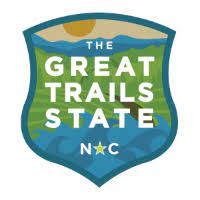 Remember back during Year of the Trail (last year) how easy it was to find a Year of the Trail event? You simply went to the Great Trails State Coalition website, clicked on the Events page, and — Voila! — you had access to events from the mountains to the coast. YOTT may have passed, but the Events page lives on. It’s still a great way to find out what great trail-related events are going on around the state. Take this weekend: On Saturday, there’s the 9th Annual Wheels on the Greenway in Greensboro, the Haw River Camp ’n’ Clean, and our very own Deep River paddle trip and hike (see main story). On Sunday, Outdoor Women and the Dan River Basin Association host a free beginner kayak safety class at HaRo (hip-speak for (Hanging Rock”) Lake at Hanging Rock State Park. Continue to discover events around the state at the Great Trails State Coalition Events page, here.
Remember back during Year of the Trail (last year) how easy it was to find a Year of the Trail event? You simply went to the Great Trails State Coalition website, clicked on the Events page, and — Voila! — you had access to events from the mountains to the coast. YOTT may have passed, but the Events page lives on. It’s still a great way to find out what great trail-related events are going on around the state. Take this weekend: On Saturday, there’s the 9th Annual Wheels on the Greenway in Greensboro, the Haw River Camp ’n’ Clean, and our very own Deep River paddle trip and hike (see main story). On Sunday, Outdoor Women and the Dan River Basin Association host a free beginner kayak safety class at HaRo (hip-speak for (Hanging Rock”) Lake at Hanging Rock State Park. Continue to discover events around the state at the Great Trails State Coalition Events page, here.
AHS on National Trails Day
We will talk more about National Trail Days, which is June 3, next week. But if you want to start planning your observance now, check out the American Hiking Society’s National Trails Day page. Learn what NTD is about, and more importantly, use it to find an NTD event near you. Check it out here
Camping
The Camping Canuck: ‘100 Camping Hacks’
Yes, more tips, these from The Camping Canuck.
Duct tape is but one wise trick in the hiker’s arsenal. To learn of others — from unlikely fire starters (Doritos) to other multi-use stars (baking soda, good for everything from treating minor burns to calming an upset stomach) — check out these “100 Camping Hacks That Will Blow Your Mind,” from The Camping Canuck. 07.25.24
